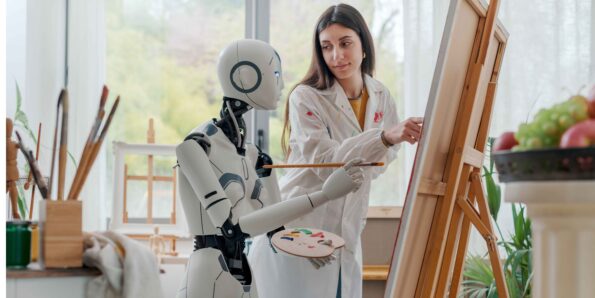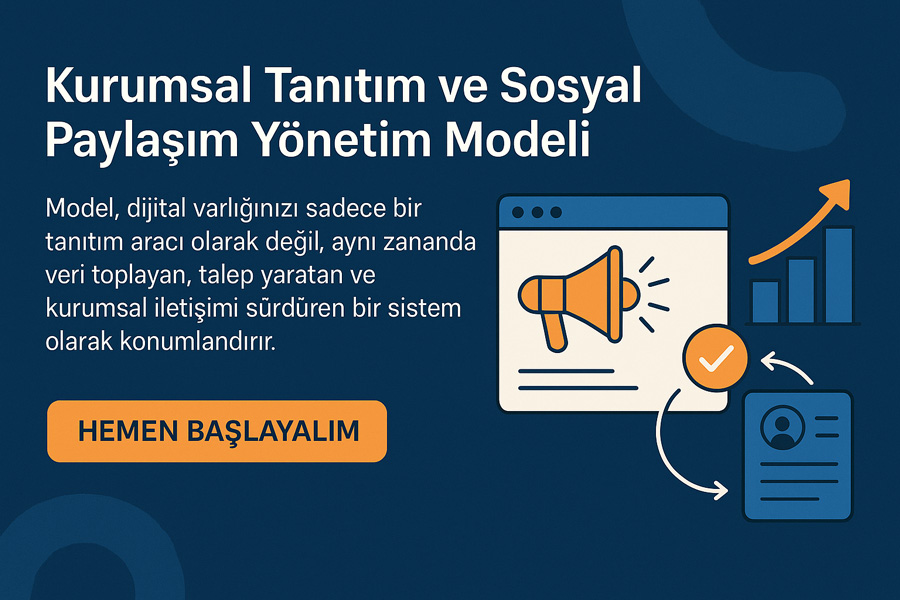Set Up a Robot Factory is a major undertaking based on technology and innovation. This process requires detailed planning, accurate financial decisions, and strategic steps in line with the goal. Establishing a robot manufacturing facility is a unique opportunity to gain a strong foothold in the sectors of the future. Here are the basic steps of this process and what you need to consider to achieve success: 🤖
İçindekiler
TogglePlanning and Research Process
A robot factory setup process should begin with a comprehensive market analysis. The sectors you will serve, your product range, and your target audience are determined at this stage. Industrial robots are in great demand, especially in the automotive and logistics sectors. It is also important to understand the current players in the sector and the solutions they offer by conducting a competitive analysis. Remember, a correct initial strategy brings long-term success. 🌟
Technological Infrastructure and Equipment Selection
To establish a robot factory, you need to integrate the latest automation and robotic technologies. The machines, software and IoT systems to be used in your production line directly affect the efficiency of your factory. At the same time, you can optimize your costs by choosing energy-efficient equipment. A modern and flexible infrastructure allows rapid adaptation to future technological changes.
Determining Costs and Financial Planning
A robot factory costs are one of the most important elements in the installation process. Determining your budget correctly covers all the details from equipment purchase to personnel expenses. You may consider taking advantage of government incentives, grant programs or private investor support to establish a robot production facility. Don’t forget to create a reserve fund for unexpected costs in your financial planning process. 💰

Process Management and Operational Structure
A successful robot factory installation process is based on effective management of operational processes. All details from the production line to logistics planning must be clearly defined. Quality control mechanisms and sustainable production techniques guarantee the long-term success of your factory. In addition, you can save time and money by optimizing your processes with digital solutions.
As Adapte Digital, we are here to guide you in this process and strengthen your factory with digital strategies. Let’s take the right steps together to step into the robotics of the future! 🚀✨
Basic Steps to Establishing a Robot Factory
The rapid advancement in robotics makes the idea of establishing a robot factory attractive for entrepreneurs. However, achieving success in this process depends on taking the right steps and solid planning. Here are the basic steps for entrepreneurs who want to establish a robot manufacturing facility:
Determining the Right Business Model
The first step in the robot factory setup process is to clearly define your production goals. Will you produce industrial robots or focus on service robots? You should decide which sector you will serve by analyzing your target market and the competitive environment. In addition, finding answers to questions such as Will you do customized production or focus on standard products will clarify your business model. 🚀
Adapte Dijital’in 10 yıllık deneyimiyle geliştirilen bu model, kurumsal web sitenizi sadece tasarlamakla kalmaz;
onu data toplayan, talep yaratan, kurumsal iletişim sağlayan bir dijital yönetim altyapısına dönüştürür.
Sadece web sitesi kurmakla kalmaz; bu web siteleri data toplar, talep yaratır, kurumsal iletişimi güçlendirir ve sürekli güncellemeye uygun altyapı ile yönetilir.
Technological Infrastructure and Equipment Selection
Choosing the right technology is vital in the robot factory installation process. Automation solutions, IoT integrations and energy-efficient machines will increase the performance of your production line. In addition, you can reduce your costs by choosing advanced robotic software and efficiency-oriented equipmentyou can reduce and increase your production capacity. The right infrastructure plays a critical role in long-term success. ⚙️
Financial Planning and Cost Analysis
Robot factory costs are one of the factors that directly affect the installation process. It is necessary to plan the investments to be made in land, equipment, labor and technology in detail. Creating the right financial strategy at this point will accelerate the return on your investments. You can also optimize your total costs by researching government incentives. 💰
Managing and Implementing the Process
Finally, it is necessary to manage the installation process effectively. It is recommended that you proceed step by step throughout the Robot factory installation process and get support from experts at every stage. This ensures that your production line goes into operation smoothly. As Adapte Digital, we are with you in this process with our digital solutions.
Establishing a robot factory is a process that is possible with disciplined planning and the right strategies. Start taking the right steps now to reach your dream production facility! 🌟
Determining the Target Market and Product Type
Establishing a robot factory requires having a successful business model and shaping this model in line with your target market. When preparing a Robot factory business plan, you should both conduct market analysis and determine the types of robots you will manufacture. These steps play a critical role in the long-term success of your factory. 👩💻
Market Analysis and Target Audience Identification
One of the most important stages of setting up a robot factory is to clarify the target audience by conducting a market analysis. Market analysis allows you to understand current demand, your competitors, and industry trends. For example:
- Industrial robots: They are widely preferred in automotive, logistics and production lines.
- Service robots: They are increasingly in demand in the healthcare, retail and cleaning sectors.
At this point, deciding which sector you will serve is an important part of your factory’s robot factory business plan. Determining the right target audience allows you to use your resources most efficiently. 🎯
Determining Product Types
After deciding on your target market, you should determine what type of robots will be produced. This directly affects your factory’s technological infrastructure and investment costs.
Adapte Dijital’in 10 yıllık deneyimiyle geliştirilen bu model, kurumsal web sitenizi kurumunuzu/markanızı anlatan, tanıtan, güven yaratan, talep oluşturan bir dijital yönetim platformuna dönüştürür.
Adapte Dijital, bu modelde bir konumlandırma ajansı olarak çalışır. Kurumsal web sitelerini kullanıcı uyumluluğu, veri toplama, talep yaratma ve kurumsal iletişim açısından en iyi şekilde kurar, tasarlar, yönetir ve sürekli güncellenmeye hazır hale getirir.
- Industrial robots: Require a more complex production line but offer high profit margins.
- Service robots: Appeal to a wide range of customers with lower installation costs.
If you are preparing a business plan to establish a robot factory, you should consider both categories and develop a production strategy that is in line with market trends. you should determine.
Creating a Competitive Advantage
When determining market analysis and target audience for your robot factory, it is important to offer features that will stand out from your competitors. This can be possible with innovative product designs, energy-efficient solutions or special software integrations. Remember, a unique value proposition that you will offer to your customers will take you one step ahead. 🚀
Conclusion
Correctly determining the target market and product type is one of the cornerstones of your robot factory business plan. As Adapte Digital, we are with you in this process with our comprehensive market analysis, strategic target audience selection and digital support solutions. Together with you, we make investing in future robotics easier and more effective. 💡
Standout Sectors in Robotics
Robot technologies offer innovative solutions to today’s rapidly growing and transforming sectors. Establishing a robot factory can create a great business opportunity by producing products specific to these sectors. Establishing a robotic production facility can be a strategic step to provide robotic solutions for sectoral needsr. Here are the sectors where robotics technologies stand out:
Automotive Sector 🚗
The automotive sector is one of the areas where robotic technologies are most widely used. In production lines, robots provide precision and speed in processes such as assembly, welding and painting. industrial robots are especially preferred in this sector to increase efficiency and minimize human error. Building a robot factory creates the opportunity to offer customized robot solutions for automotive manufacturers.
Healthcare Sector 🏥
Robot technologies are revolutionizing both patient care and surgical operations in the healthcare sector. Surgical robots support delicate operations, while service robots are used in patient transportation and logistics. By establishing a robot production facility for this sector, you can develop products that meet the needs of both hospitals and care centers. Robots in the healthcare sector undertake the mission of improving human life.
Logistics and Storage Sector 📦
With the rise of e-commerce, logistics and storage processes require more automation. Establishing a robot production facility is a great opportunity to produce storage and transportation robots for this sector. Warehouse robots increase the operational efficiency of businesses by organizing products quickly and accurately. Robots in the logistics sector play a critical role in accelerating delivery processes.
Food and Agriculture Sector 🌾
In the agriculture and food sectors, robots are used in processes such as harvesting, planting and packaging. In particular, agricultural robots reduce the workload of farmers and support the transition to sustainable production methods. Establishing a robot factory for this sector can provide the opportunity to provide the solutions required for modern agricultural techniques.
Conclusion
Robot technologies are providing a major transformation in many sectors, from automotive to healthcare, logistics to agriculture. Establishing a robot production facility to provide robotic solutions for these sectors offers entrepreneurs the opportunity to invest in the future. As Adapte Dijital, we offer digital strategy and technological support for your factory to make a difference in these sectors. Work with us to achieve sectoral success in robotics! 🤖✨
Preparing a Business Plan for a Robotics Factory
In a world where robotics technologies are rapidly developing, establishing a robotics factory is a strong investment for the future. However, this investment requires a carefully prepared business plan to achieve success. In a large project such as establishing a robotics production facility, you can control costs, clarify your goals and ensure successful business management by preparing a detailed business plan. 🚀
Setting a Vision and Goal
A robot factory business plan begins by clarifying the vision and mission of the business. In this step, you need to find answers to the following questions:
- What sector will your factory serve?
- What type and features will the robots be produced?
The answers to these questions form the cornerstones of your business plan. For example, if you want to produce industrial robots, you may need to focus on the automotive and logistics sectors.
Cost Analysis and Financial Planning
Setting up a robot factory requires a significant investment. Calculating costs correctly is the most critical stage of planning. Here are the main items you should consider:
- Equipment Costs: Machines, software and infrastructure required for robot production.
- Personnel Expenses: Qualified engineers, technicians and management staff.
- Installation and Maintenance Costs: Factory construction and production line installation.
When preparing your budget, you should carefully study robot factory costs and set aside a share for unexpected expenses. 💰
Target Market and Competition Analysis
A good business plan involves understanding market dynamics and analyzing the competition. If you want to set up a robot manufacturing facility, you need to determine what needs are not being met in your target market. This way, you can differentiate your products and stand out from your competitors.
Planning Operational Processes
Another important component of your business plan is the detailing of operational processes. Production line organization, logistics processes and quality control mechanisms should be planned at this stage. You can also create an environmentally friendly business by focusing on sustainable production methods. 🌱
Conclusion
Setting up a robot factory is a difficult process to achieve without the right business plan. Adapte Digital helps you determine your business’s digital strategies and shape your business plan.We are with you. Let’s take the necessary steps together to establish your dream robot factory. 🤖
How to Do Market Analysis?
Establishing a robot factory achieves success not only with production technologies and investment decisions, but also with understanding your target audience and the market correctly. Market analysis and target audience determination for robot factory is a fundamental step that strengthens your factory’s competitive advantage. Here are the steps to conducting an effective market analysis:
Start with Industry Research
Robotic technologies are a rapidly evolving field, and following industry trends is critical to success. If you want to Set up a robot manufacturing facility, it’s important to ask these questions:
- What is the market size?
- Which types of robots (industrial, service, agricultural) are in greater demand?
- Who are the current players and what kind of products do they offer?
This information will help you shape your manufacturing strategy. Remember, the better you understand the industry, the more effective solutions you can offer. 🚀
Define the Target Audience
When conducting market analysis, you need to clearly define your target audience. For those who want to establish a robot factory, the target audience may generally include the following groups:
- Automotive manufacturers (for industrial robots)
- Hospitals and healthcare organizations (for surgical and service robots)
- Warehousing and logistics companies (for transportation robots)
Understanding your target audience’s needs allows you to customize your products to their demands. Your customers will say, “This is exactly what I was looking for!” listen to their needs to make them say. 🎯
Conduct Competitor Analysis
A successful market analysis for robot factories requires studying your competitors. When conducting a competitive analysis, you can focus on the following elements:
- What are your competitors’ products and services?
- What pricing strategies do they employ?
- What areas do customer feedback suggest for improvement?
Understanding your competitors’ strengths and weaknesses will help you create a unique value proposition.
Use Data and Define Your Strategy
The result of market analysis should be data-driven strategic decisions. To establish a robot manufacturing facility, you should create a roadmap that clarifies the needs of your target audience, gaps in the industry, and your competitive advantage. You can also strengthen your decisions by using resources such as Google Trends, industry reports, and customer surveys. 📊
Result
Market analysis and target audience determination for an effective robot factory ensures that your factory is in the right area, with the right products and appealing to the right customers. As Adapte Digital, we are with you in this process with our digital strategy and analysis tools. Contact us to make a difference in the market! 🤖✨
Evaluation of Investment and Financial Resources
Establishing a robot factory is an investment that offers high potential returns. However, finding and planning the right financial resources is critical in this process. Every investment to be made to establish a robot production facility is closely related to the balance of cost and income, which is the key to success. Here are the basic steps you need to consider on this journey:
Calculating Costs in Detail
Setting up a robot factory starts with a comprehensive cost analysis. Determining your costs correctly allows you to manage your resources effectively. The main cost items you should consider:
- Equipment Costs: Machines, robotic software and automation systems to be used in the production line.
- Setup Costs: Construction of the factory and infrastructure arrangements.
- Personnel Costs: Salaries of qualified engineers and technicians.
These costs may vary depending on the size of your factory and its technological infrastructure. When preparing your budget, make sure to allocate a share for unexpected expenses. 💰
Determining Financial Resources
During the robot factory financial planning process, you can reduce risks by diversifying your investment resources. Financial resources include:
- Government Incentives and Grants: Innovative projects, such as robotics, are often encouraged by government support.
- Private Equity Investments: Angel investors or venture capital funds,can be an important source of financing in additional projects.
- Credit and Leasing: Bank loans or equipment leasing options are an effective method to cover your installation costs.
Return on Investment and Profitability Analysis
It is essential to conduct a profitability analysis for every investment to be sustainable. In projects requiring high capital, such as establishing a robot production facility, the return on investment (ROI) period should be taken into consideration. You can reduce production costs and increase profitability by using energy efficient systems and automation solutions.
Long-Term Financial Planning
You should focus not only on the installation phase, but also on the long-term operating costs of your factory. It is important to set aside a regular budget for maintenance expenses, energy costs, and technological updates. Also, don’t forget to invest in digital marketing and sales strategies for sustainable growth. 🌱
Conclusion
Establishing a robot factory can be successful with the right investment decisions and effective financial planning. As Adapte Digital, we offer comprehensive digital solutions to help your factory achieve its financial goals. Let’s work together to build your dream robot factory! 🤖✨
Government Incentives and Grants
Establishing a robot factory is a process that requires major financial investments. However, it is possible to ease this burden by accessing the right resources. Government incentives and grants provide a great advantage for entrepreneurs who want to establish a robot production facility. These supports can help you get off to a quick start by reducing your business’s startup costs. 💡
1The Importance of Government Incentives
The incentives provided by the government to establish a robot factory reduce your costs and increase the competitiveness of your projects. Especially in innovative and technological production projects, governments often offer support packages. For example:
- KOSGEB Incentives: Provides financial support for technology-focused projects for SMEs.
- TÜBİTAK Grant Programs: Provides resources for R&D and innovation projects.
- Regional Incentives: Provides opportunities such as tax deductions and credit support to encourage investment in developing regions.
In order to benefit from these incentives, it is of great importance that your project has an innovation-focused and sustainable structure. 🌱
How to Apply for Grant Programs?
Applications for robot factory financial support and incentives are usually based on a specific process and criteria. Here are the steps you should consider during the application process:
Preparing a Project File: Prepare a file detailing your project’s goals, cost analysis, and economic contributions.
Selecting the Appropriate Institution: Determine the most appropriate incentive program for your project (such as KOSGEB, TÜBİTAK, or Development Agencies).
Application Process: Complete your application from online platforms or relevant institutions. Attention, a complete application increases your chances. 💼
Special Incentives for Robotics and Technology-Focused Projects
Technology and robotic production are among the priority investment areas of many states. If you want to benefit from special incentives to establish a robot production facility, be aware of these advantages:
- Tax Reductions: Factories established in technology development zones can benefit from tax exemptions.
- R&D Supports: Direct grants can be provided to projects developing robotic software and automation systems.
- Export Incentives: Logistics and marketing support can be provided for the sales of the robots you produce abroad.
Conclusion
Government incentives and grants offer unique opportunities for entrepreneurs who want to establish a robot factory. Taking advantage of these supports in the right way will help your business become a solidr foundation. As Adapte Digital, we are here to prepare your projects for appropriate incentive programs and support them with digital strategies. Contact us to make your dream come true! 🤖✨
Technological Infrastructure and Equipment in Robot Factory Setup
Establishing a robot factory requires the integration of advanced technologies and innovative equipment. The technological infrastructure directly affects the efficiency and production capacity of your factory. Technologies used in robot production both optimize production processes and provide your business with a competitive advantage. Here are the basic technologies and equipment you should pay attention to when setting up a robot factory: 🤖
Automation and Robotic Systems
Robot production technologies require the correct installation of automation systems. These systems reduce errors and increase efficiency by minimizing human intervention in production processes. Industrial robotic arms can work effectively in delicate tasks such as welding and assembly. You can also monitor the real-time performance of your robots with IoT-based solutions.
Production Line Design and Equipment Selection
To establish a robot factory, you must design your production line correctly. When deciding which equipment to use, you should consider the following factors:
- Flexibility: Create compatible lines for different types of robots.
- Efficiency: Choose energy-saving machines.
- Extensibility: Use equipment that can adapt to future technological innovations.
This optimizes your initial investment and reduces your long-term costs.
Software and Control Systems
Technologies used in robot production also include a strong software infrastructure. Advanced control systems are required for robots to operate smoothly on the production line. Artificial intelligence-based software analyzes production processes and suggests process improvements. In addition, you should implement data encryption and cybersecurity measures to increase your security.
Advantages of Technological Integration
Advanced robot production technologies increase your factory’s competitiveness in both national and international markets. Investment in technological infrastructure increases production capacity while minimizing error rates. In addition, you can adopt a sustainable production model by choosing environmentally friendly equipment. 🌱
As Adapte Dijital, we are here to help you plan your technological infrastructure and equipment in the most effective way in robot factory installation. Contact us to make a difference by investing in future technologies! 🚀✨
Selecting Automation Systems
Establishing a robot factory requires choosing the right automation systems to optimize production processes and increase efficiency. Robot production processes and automation solutions provide fast, reliable and cost-effective results at every stage of production. Here are the important points to consider in this process:
Contributions of Automation to the Production Process
Automation systems increase production speed and reduce error rates by minimizing human intervention in the robot production line. For example:
- Robotic arms for welding processes work faster and more precisely than humans can.
- Automation systems used in assembly processes combine parts perfectly.
These solutions allow you to keep costs under control while increasing product quality. Automation is an important step that takes your factory one step ahead. 🚀
Choosing the Right Automation Technology
When choosing automation systems to establish a robot factory, you should pay attention to the following factors:
- Production Volume: Prefer fully automatic systems for high production capacities.
- Flexibility: Create lines that can be adapted to different types of robots.
- Energy Efficiency: Contribute to sustainable production with environmentally friendly systems.
You can also monitor and optimize your processes in real time with IoT-based systems and AI-supported solutions.
Advantages of Modular Systems
Modular systems stand out among robotic production processes and automation solutions. These systems can be customized and easily expanded according to your needs. You can quickly respond to changing demands by giving your production lines a modular structure.
Gaining a Competitive Advantage with Automation Systems
The right automation solutions help your factory gain a competitive advantage in the market. These systems allow you to offer fast delivery and high-quality products to both national and international customers. Shorter production times make you a reliable business partner in the eyes of your customers. 💡
Conclusion
Choosing the right automation systems is one of the most critical steps to establishing a robot factory. As Adapte Dijital, we help you determine the most suitable automation solutions for your factory and optimize your processes. Contact us to take a solid step into the future by investing in technology! 🤖✨
Points to Consider in Robotic Production Line Installation
Establishing a robot factory is directly related to designing and operating the right production line. The robot production sector requires production lines planned with high precision in line with rapidly developing technologies and increasing demand. Here are the key points to consider when setting up your robotic production line:
Optimizing Manufacturing Processes
Setting up a robot factory requires ensuring that all manufacturing processes run smoothly.
- Analyze each production stage in detail. Determine which processes are suitable for automation.
- Identify bottlenecks in the production process and choose technologies that will optimize these points.
Such planning increases the efficiency of your production line and reduces costs. Correct production planning increases your competitive power. 💡
Technological Infrastructure and Robotic Systems
Robot production sector, constantly renewedtechnology. Therefore, it is important that the robots and automation systems used in your production line are up to date with the latest technology.
- Robotic arms: Indispensable for processes such as precision assembly, welding or painting.
- Artificial intelligence-supported control systems: Increase the efficiency of processes by monitoring the production line in real time.
A flexible and modular production line allows you to easily adapt to future technological innovations.

Security and Employee Compliance
Setting up a robot factory requires taking special precautions to ensure the safety of employees.
- Follow safety standards when installing robotic systems.
- Organize training programs to ensure that employees work in harmony with robots.
These steps will ensure that your production line operates both safely and efficiently. 🛡️
Environmental and Sustainability Factors
When setting up your robotic production line, prioritize environmentally friendly practices.
- You can reduce your carbon footprint by using energy-efficient machines.
- Working with recyclable materials helps you create a sustainable production process. 🌱
Conclusion
Setting up a robot factory requires setting up an effective production line. A production line created with the right technologies, safety measures and sustainability criteria will ensure the success of your factory. As Adapte Digital, we offer you digital solutions to optimize your robotic production line. Start working with us to invest in the production technologies of the future! 🤖✨
Compliance with Legal and Technical Requirements
Establishing a robot factory requires successful process management, not only by preparing the technological infrastructure, but also by meeting legal and technical requirements. Legal permits for robot production facilities and compliance with standards ensure that your factory operates safely, sustainably and competitively. Here are the key points to consider during this process:
License and Permit Processes
Before you set up your robot production facility, you should learn the local regulations and legal regulations in the region where you will operate.
- A business license and environmental permits are required for the official start of the production processes.
- You can apply for the necessary certifications for robot production and CE marking and you can guarantee compliance with international standards.
Completion of legal processes is important for the long-term safety of your factory.
Determining Technical Requirements
Establishing a robot factory requires compliance with technical standards.
- It is essential that the machines used in production comply with safety and quality standards.
- ISO 9001 Quality Management System Certificate is an important requirement for both customer trust and market competition of your products.
Compliance with these standards makes it easier for your production processes to be accepted in both local and international markets.
Employee Safety and Training
Legal compliance is not limited to production processes; employee safety should also be considered in this context.
- Train your employees to work safely with robotic systems.
- Create a work environment that complies with Occupational Health and Safety (OHS) regulations. 🛡️
Conclusion
Legal permits and technical requirements for a robot manufacturing facility are vital to the success of your factory. By paying attention to the details in this process, you can both ensure legal compliance and build a trusted brand. At Adapte Digital, we guide you to ensure legal and technical compliance of your factory. Start working with us to achieve success! 🤖✨
Required Certificates for a Robot Factory
Establishing a robot factory involves not only investing in modern equipment and technologies, but also meeting national and international certification requirements. Equipment required for a robot factory, as well as certificates documenting the conformity of production processes, increase the reliability and market share of your factory. Here are the points you should pay attention to regarding legal permits and certificates for a robot production facility:
CE Certificate
If you aim to sell your robots in the European market, it is essential that your products receive a CE certificate. This certificate shows that your products comply with European Union safety, health and environmental standards. Without the CE mark, your robots will not be accepted in the international market. In addition, the machines and software used during production must also comply with these standards.
ISO 9001 Quality Management System
Establishing a robot factory requires high standards in quality management. ISO 9001 certification ensures the effectiveness of your factory’s management processes and product quality.
- This certification increases customer satisfaction.
- Ensures the implementation of quality control mechanisms on production lines.
ISO 9001 provides critical assurance for robotic production facilities. 🌟
ISO 14001 Environment Management System
If you are planning to open a robot factory, you should consider minimizing environmental impacts. ISO 14001 certification proves your compliance with environmentally friendly production processes and waste management standards.
- This certification supports your environmental sustainability goals.
- It both facilitates legal compliance and increases brand value. 🌱
Licenses Required for Robot Production
Licenses required for robot production are mandatory for your factory to operate. Depending on the location of your production facility, you will need to obtain a business license and environmental compliance documents. It is also important to obtain international trade permits if you plan to export.
Safety Certificates
Equipment used in robotic production lines must comply with national and international safety standards. For example, TÜV safety certificates may be requested for robotic arms and automation systems.
Conclusion
Establishing a robot factory includes not only production processes, but also certification processes. These documents increase the reliability of your factory and facilitate your access to international markets. At Adapte Dijital, we guide you to obtain the necessary certificates and optimize your processes. Work with us to take a step into the robot technologies of the future! 🤖✨
Environmentally Friendly Production Standards
Establishing a robot factory is not only a technology and production-focused process. It also requires adopting an environmentally friendly production approach. The Robot factory opening guide emphasizes the importance of complying with environmentally friendly standards; this is not only a legal obligation, but also an approach that strengthens companies’ sustainability visions. Here are the basic points to consider for environmentally friendly production standards:
Using Energy-Efficient Equipment
Energy-efficient equipment should be preferred for an environmentally friendly production process. This equipment reduces your production costs and your carbon footprint. For example:
- Using energy-efficient machines in robotic production lines increases environmental sustainability.
- IoT-based automation systems optimize the production process and prevent unnecessary energy use.
In this way, you can both contribute to the environment and reduce your operating costs. 🌱
Using Recyclable Materials
Setting up a robot factory can encourage the use of recyclable materials in production processes.
- Making parts used for robotic production from environmentally friendly and sustainable materials reduces waste.
- By establishing waste management systems within the factory, you can support recycling in both production and logistics processes.
Recycling is one of the effective ways to minimize environmental impact. ♻️
Compliance with International Environmental Standards
Robot factory opening guide prioritizes compliance with international environmental standards.
- ISO 14001 Environmental Management System Certificate helps you control the environmental impacts of your factory and achieve your sustainability goals.
- Compliance with local and international environmental regulations increases the reliability of your factory.
Renewable Energy Usage
Using renewable energy sources in your factory is one of the most effective steps of environmentally friendly production standards.
- Renewable energy sources such as solar panels or wind energy systems minimize your impact on the environment by meeting your energy needs.
- This investment, provides advantages for both the environment and the business budget in the long term. 🌍
Conclusion
Establishing a robot factory becomes both more efficient and more sustainable when it complies with environmentally friendly production standards. You should focus on the right strategies to reduce environmental impacts and achieve your long-term sustainability goals. As Adapte Digital, we offer you digital solutions to achieve your environmentally friendly production goals. Let’s work together for a nature-sensitive future! 🤖✨
Sustainable Robotic Production Techniques
Establishing a robot factory requires not only creating a high-tech production process, but also adopting a sustainable approach by minimizing environmental impacts. Robot factory and sustainable production are of great importance in terms of both protecting natural resources and optimizing operating costs in the long term. Here are the key points about sustainable robotic production techniques:
Energy-Efficient Techniques
For a sustainable robot factory, production techniques that minimize energy consumption should be used.
- High-efficiency motors and equipment increase production speed while reducing energy consumption.
- IoT-supported automation systems provide real-time data on energy usage in production lines and allow processes to be optimized.
This reduces both your carbon footprint and your operating costs. 🌱
Recyclable Materials Production
The recyclability of the materials used for a robot factory and sustainable production is a critical step.
- Choosing the parts used in the production line from environmentally friendly materials as much as possible reduces the amount of waste.
- By implementing recycling processes within the factory, you can ensure that waste from production is reused. ♻️
Waste Management and Water Saving Techniques
Establishing an effective waste management system in robotic production processes increases sustainability.
- You can reduce environmental impacts by incorporating metal and plastic waste generated during production into recycling programs.
- Technologies such as closed-loop cooling systems can be used to optimize water consumption.
Renewable Energy Use
In sustainable robotic production techniques, the use of renewable energy sources provides a great advantage.
- Renewable energy systems such as solar panels and wind turbines help you meet your factory’s energy needs without harming the environment.
- Such investments provide economic benefits to your business by reducing energy costs in the long term. 🌍
Conclusion
Establishing a robot factory, when combined with sustainable production techniques, offers a structure that is not only environmentally friendly but also economically advantageous. With the right techniques, you can increase your production efficiency while minimizing your environmental impact. As Adapte Dijital, we are with you to help your factory achieve its sustainable production goals. Let’s build the eco-friendly robot factories of the future together! 🤖✨
Digital Strategies for Growing a Robot Factory
Establishing a robot factory is the first step to success; however, you need effective digital strategies to grow your factory and gain a competitive advantage. Digital transformation offers many opportunities, from optimizing production processes to increasing customer reach. Digital strategies, especially those focused on robot factory and sustainable production, both increase your efficiency and help you achieve your environmental responsibility goals. Here are some digital strategies that can be implemented to grow your robot factory:
Data-Based Decision-Making Processes
Digital solutions provide powerful tools to monitor and analyze all operations in your factory.
- With IoT devices and sensors, you can detect efficiency and performance problems in your production line in real time.
- Artificial intelligence-powered analysis systems allow you to identify process improvement opportunities and make smarter decisions.
Data-driven approaches provide a critical step for your factory’s growth. 📊
Online Marketing and Sales Channels
Digital strategies provide powerful tools to reach your target audience and increase your brand awareness.
- A SEO-optimized web site allows your robot factory to reach a wider audience.
- You can quickly reach potential customers with Google Ads and social media advertising campaigns.
Digital marketing is an effective method to increase your factory’s sales. 🚀
Digitalizing Sustainable Production
Robot factory and sustainable production strategies become more effective with digital solutions.
- You can use digital platforms to monitor and optimize energy consumption in your production line.
- You can provide both environmental and economic benefits by integrating your recycling processes with digital tools. 🌱
Conclusion
Establishing a robot factory should be supported by digital strategies to achieve your growth goals. As Adapte Digital, we help you optimize your factory’s digital transformation processes and achieve your growth goals. We are with you with our digital solutions for the robot technologies of the future! 🤖✨
Increasing Brand Awareness with Digital Marketing
Establishing a robot factory should be supported by a strong digital marketing strategy as well as technological infrastructure and production processes. Market analysis and target audience determination for robot factory is one of the most critical steps of digital marketing. With the right strategies, you can increase your factory’s brand awareness and gain a competitive advantage in the sector. Here are the opportunities that digital marketing provides for robot manufacturing factories:
Reach Your Target Audience with the Right Message
Digital marketing is one of the most effective ways to bring your brand together with the right target audience.
- Transfer the benefits of your robot manufacturing factory consultancy services to your target audience with an attractive language.
- Understand the needs and expectations of your potential customers through market analysis.
- Reach your customer base through digital tools such as social media, email marketing and Google Ads.
With the right message, you can quickly increase your brand awareness. 🎯
Stand Out with SEO and Content Marketing
Make your website SEO-friendly to increase your brand’s digital visibility.
- Create content focused on frequently searched terms related to building a robot factory.
- Show expertise in your industry with blog posts, white papers, and e-books.
- Keyword-optimized content helps your website rank higher in search engines.
Visual and Video Create Engagement with Content
For a technology-focused business like a robot manufacturing factory, visual and video content is a powerful marketing tool.
- Prepare videos that tell your production processes, technological infrastructure, and success stories.
- Impressive visuals and infographics allow you to convey your messages faster and more effectively.
You can increase engagement with video content and make your brand unforgettable. 🎥
Build Community with Social Media
Social media platforms are a great opportunity to increase your brand awareness and engage with your customers.
- LinkedIn is an ideal platform to share your content that specializes in the B2B sector.
- Impress your followers by sharing visuals that show your production processes on platforms like Instagram and Facebook.
Social media allows you to establish a more personal connection with your customers. 🌐
Conclusion
Digital marketing is an indispensable tool for establishing a robot factory and growing your brand. With the right strategies, you can reach your target audience and increase your brand awareness. As Adapte Digital, we are here to optimize your factory’s digital marketing processes and help you achieve your growth goals. Build your future with us! 🤖✨

Effective Use of Digital Ads
Establishing a robot factory achieves real success when supported by an effective digital advertising strategy as well as technological infrastructure. Digital ads allow your factory to reach its target audience, promote your products, and increase your brand awareness. Here are some important tips on how to use digital advertising effectively for robot factories:
Determining the Target Audience
The success of your digital advertising campaigns begins with determining the right target audience.
- Clearly define who your target audience is: Focus on niche groups such as manufacturers, logistics or automotive companies that need industrial robots.
- Shape your campaigns according to demographic features such as age, location, and industry using the targeting features offered by advertising platforms.
Meeting the right target audience ensures efficient use of your advertising budget. 🎯
Gaining Visibility with Google Ads
Google Ads is a powerful tool for those who want to establish a robot factory to introduce their brands to potential customers.
- Search network ads allow you to reach people looking for your factory’s services.
- With the display ad network, you can highlight your technological infrastructure and production solutions with visual content.
You can increase your factory’s digital visibility by using the right keywords.
Interaction with Social Media Ads Create
Social media platforms offer effective advertising spaces for robot factories.
- LinkedIn ads are the most effective way to reach your B2B-focused target audience.
- Instagram and Facebook are ideal for promoting your production processes or success stories with visuals and videos.
Social media ads not only promote your factory but also create an emotional connection with your followers. 🌐
Try Innovative Ad Formats
Use different formats in your ad campaigns to attract attentiont.
- Video ads are a great way to promote your robotic production line.
- Interactive ads can grab your customers’ attention and encourage them to learn more about your factory.
Creative and innovative ads can help your factory stand out from the competition. 🚀
Conclusion
An effective digital advertising strategy is vital to establishing and growing a robot factory. As Adapte Digital, we are here to optimize your factory’s digital advertising campaigns and help you achieve your goals. Work with us to stand out from the competition and leave your mark in the digital world! 🤖✨
You can watch our founder Gürbüz Özdem’s Digital Consultancy and Digitalization video for detailed information You can get it.
Adapte Digital’s Success Stories: Meet Our References
With the comprehensive services offered by Adapte Digital, you can take your business to the next level in the digital world, expand your customer base and increase your brand awareness. Contact our expert team and turn your digital journey into a success!
Witness Adapte Digital’s success stories! Visit our References page now to take a look at our projects that make a difference in the digital world and see how we ensure customer satisfaction. Take your place for a powerful digital transformation!



















































